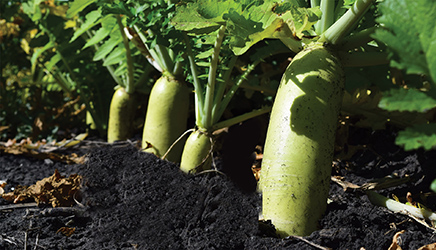Forage Oats (53%)
A fast growing cool season annual that will produce large amounts of high quality forage in the spring to early summer. Its extensive root system will also help build soil structure, suppress weeds and capture excess nutrients from the soil.
Forage Peas (14%)
A cool season annual legume used for forage production and usually mixed with other species. Forage peas are an excellent source of protein, will fix nitrogen and produce high quality forage.
Common Vetch (7%)
Common Vetch is an annual legume used mostly in cover crop mixes as a nitrogen scavenger and forage producer. It will produce a large amount of dry matter per acre under varied soil conditions.
Foxtail Millet (7%)
A warm season annual with high protein content which produces excellent forage under a variety of soil conditions.
BMR Sorghum-Sudan (7%)
BMR Sorghum sudangrass is a highly palatable hybrid that is widely adaptable and produces good quality forage. The BMR gene reduces the amount of lignin in the plant yielding increased forage quality and greater digestibility.
Frosty Berseem Clover (4%)
This cool season, annual legume will increase the quality and amount of forage production with the added benefit of nitrogen fixation to improve soil health.
Forage Radish (4%)
Forage radish is a cool season annual brassica that is excellent in grazing mixes. The tops will be grazed first, while the tuber, which can grow to 12-18 inches long, will be grazed after the first or second frost makes it more palatable.
Sunflower (2%)
Its root system allows for breaking up soil compaction and hunting for nutrients within the soil. Livestock will graze on the immature plants before they become too fibrous.
Hybrid Brassica (2%)
Hybrid brassicas have been bred for rapid growth with high leaf-to-tuber ratios providing a large amount of lush green forage. They also have excellent regrowth capabilities providing forage throughout the late spring and summer.




